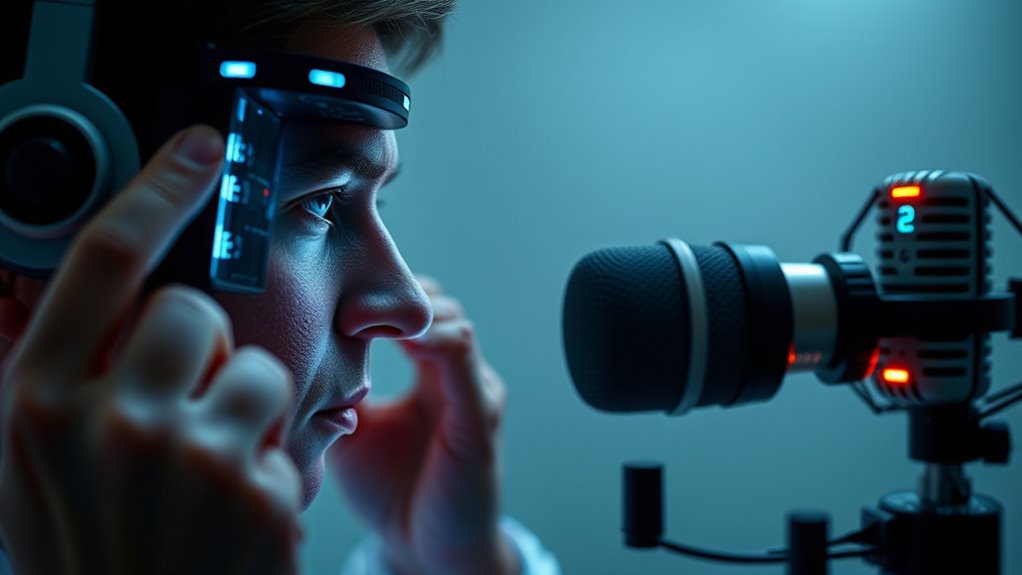To guarantee accuracy in face and voice biometric systems, you must implement exhaustive QA testing that verifies recognition performance across diverse populations. Focus on minimizing false positives and negatives, while also checking that privacy and security measures—like data encryption and privacy-by-design—are in place. Rigorous testing helps catch biases and vulnerabilities early, building user trust and regulatory compliance. Keep exploring to learn how extensive QA can protect both your system’s integrity and user data.
Key Takeaways
- Rigorous QA verifies face and voice recognition accuracy across diverse populations to prevent bias and ensure fair performance.
- Testing includes assessing false acceptance and rejection rates to optimize system reliability before deployment.
- QA processes validate that biometric systems effectively distinguish authorized users from imposters, reducing security risks.
- Privacy-focused testing ensures biometric data is protected through encryption, anonymization, and compliance with privacy regulations.
- Continuous validation during development helps identify vulnerabilities, ensuring both accuracy and security in face and voice biometric systems.

Have you ever wondered how dependable biometric systems are before they’re deployed? When it comes to face and voice recognition technologies, guaranteeing accuracy isn’t just about technical performance; it’s also about addressing critical issues like privacy concerns and data encryption. As you consider implementing these systems, remember that trust hinges on how well they perform and how securely they handle sensitive information. Privacy concerns are at the forefront because biometric data isn’t just any data—it’s deeply personal. Unlike passwords, which can be changed if compromised, your face or voice prints are permanent identifiers. That’s why rigorous quality assurance (QA) processes must verify that biometric systems accurately recognize individuals without misidentification or bias. QA teams scrutinize the algorithms to reduce false positives and negatives, ensuring the system can distinguish between authorized users and imposters reliably. But accuracy isn’t the only piece; data security is equally essential. Data encryption plays a key role here, safeguarding biometric templates stored on servers. Strong encryption methods prevent malicious actors from intercepting or stealing sensitive data, providing users peace of mind that their biometric information remains confidential. During QA testing, security protocols are examined thoroughly. It’s essential to verify that encrypted data remains protected in transit and at rest, and that access controls are robust enough to prevent unauthorized use. Incorporating privacy-by-design principles into the QA process ensures that biometric systems not only work correctly but also uphold user privacy rights. You want to be sure that the system complies with regulations like GDPR or CCPA, which mandate strict data handling and privacy safeguards. This means testing how well the system anonymizes data when possible and how it manages consent. Additionally, QA checks should include vulnerability assessments to identify potential security flaws that could expose biometric data to cyber threats. Conducting thorough testing of the entire biometric data lifecycle helps identify potential weaknesses before deployment. The ultimate goal is a system that provides accurate recognition, respects user privacy, and employs comprehensive data encryption strategies. By rigorously testing these elements, you can avoid costly mistakes after deployment, such as data breaches or biased recognition results that could lead to legal liabilities or damage to reputation. In conclusion, guaranteeing the accuracy of face and voice biometric systems involves more than just perfecting the algorithms; it also requires a strong focus on privacy concerns and robust data encryption. A well-tested system will not only enhance performance but also foster trust among users, who need assurance that their personal biometric data is protected at every stage. So, before you deploy any biometric technology, make sure a thorough QA process checks both its accuracy and its ability to safeguard sensitive information effectively.
Frequently Asked Questions
How Do Biometric QA Standards Vary Across Different Countries?
You should know that biometric QA standards differ across countries due to international compliance and cultural considerations. Some nations enforce strict privacy laws, affecting how face and voice data are collected and stored. Others may have more relaxed regulations or cultural sensitivities that influence biometric technology deployment. Staying aware of these variations helps you guarantee your biometric systems meet local requirements, avoiding legal issues and respecting cultural norms.
What Are Common Challenges in Biometric Data Collection?
You might think collecting biometric data is straightforward, but challenges like facial expression and voice modulation complicate things. Variations in facial expressions can distort recognition accuracy, while inconsistent voice modulation affects voice biometrics. These fluctuations, influenced by emotions or health, make data collection unreliable. To improve, you need to account for these factors during capture and processing, ensuring the biometric system remains accurate despite natural human variability.
How Is Biometric Data Privacy Protected During QA Processes?
During QA processes, you protect biometric data privacy by implementing strong encryption protocols to secure data at rest and in transit. You also guarantee proper consent management, making sure users are informed and have control over their data. By actively managing access rights and regularly auditing data handling practices, you reduce risks of breaches, keeping biometric information safe throughout quality assurance activities.
Can Biometric QA Adapt to New Facial or Voice Recognition Technologies?
Imagine a chameleon adapting seamlessly to new environments—that’s how biometric QA evolves with new facial recognition and voice authentication tech. You can stay ahead by continuously updating your testing protocols, integrating the latest algorithms, and training your models to recognize new patterns. This flexibility guarantees your systems remain accurate and secure, even as facial recognition and voice authentication technologies advance. Adaptation is key to maintaining reliability in a rapidly changing landscape.
What Role Does AI Play in Biometric Quality Assurance?
AI integration plays a essential role in biometric quality assurance by enhancing accuracy and efficiency. You leverage machine learning algorithms to analyze vast amounts of data, identify inconsistencies, and improve recognition performance. This technology adapts to new face and voice recognition methods, ensuring systems remain reliable. By continuously learning from real-world inputs, AI helps you maintain high standards, reduce errors, and stay ahead in biometric security advancements.
Conclusion
By prioritizing biometric QA, you safeguard the integrity of face and voice recognition tech. Consistent testing guarantees your systems stay sharp and reliable, preventing costly errors down the line. Remember, you’re only as good as your weakest link, so don’t leave accuracy to chance. Keep a vigilant eye, fine-tune regularly, and you’ll be ahead of the curve. When it comes to biometric tech, quality isn’t just a goal—it’s the foundation for trust and success.









